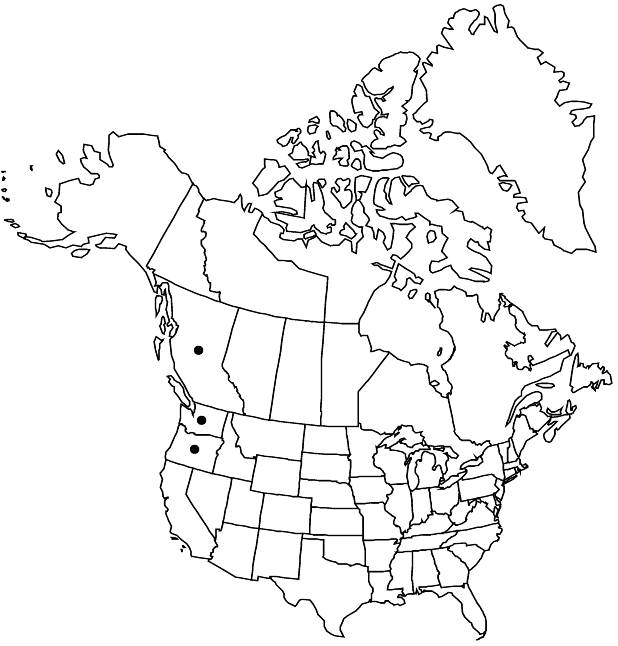Douglasia laevigata
Proc. Amer. Acad. Arts 16: 105. 1880 ,.
Plants loosely cespitose mats with branched caudex. Stems prostrate, loosely covered with marcescent, gray to light-brown leaves (becoming remote in age). Leaves spreading, thin; blade oblong-lanceolate or oblanceolate to spatulate, 5–20 × 2–6 mm, margins entire or slightly toothed, sometimes ciliolate, hairs simple, apex obtuse to slightly acute, surfaces glabrous. Scapes 2–7 mm, elongating little in fruit, minutely hairy, hairs stellate and branched. Inflorescences 2–10-flowered, bracteate; bracts 3–8, lanceolate to ovate, 3–8 × 1–3 mm, glabrous or sparsely hairy, hairs minute, branched. Pedicels 2–15 mm. Flowers: calyx 6–7 × 3–4 mm, stellate-pubescent; corolla rose-pink, violet in age, limb 8–15 mm diam., lobes 3–4 × 2–3 mm, margins entire or erose.
Phenology: Flowering early summer.
Habitat: Rocky areas
Elevation: 30-2000 m
Distribution

B.C., Oreg., Wash.
Discussion
Although the first collection of Douglasia laevigata was from the “Mountains near Mt. Hood,” the original description of the species was based on plants collected in the Columbia River gorge, which thus represent the nomenclaturally typical variety (L. Constance 1938), even though that entity constitutes an ecological variant with almost glabrous leaves and loose umbels known only from the gorge. The widespread form, var. ciliolata, has more compact umbels and larger, more toothed, conspicuously ciliolate leaves. Because intermediate forms occur commonly, and even the type specimen of D. laevigata has cilia, the infraspecific taxa are not recognized here.
A population of Douglasia laevigata from Cone Peak in the Cascade Mountains of Oregon has been reported as heterostylous due to the occurrence of a protruding “pin type” stigma from the corolla throat; this represents only a local stigmatic anomaly functioning as minor spatial separation of anthers and stigma in early anthesis rather than true heterostyly as seen in Primula. No stigmatic or pollen dimorphisms occur in these plants and no parallel “thrum type” flowers are known.
Selected References
None.
Lower Taxa
"thin" is not a number.